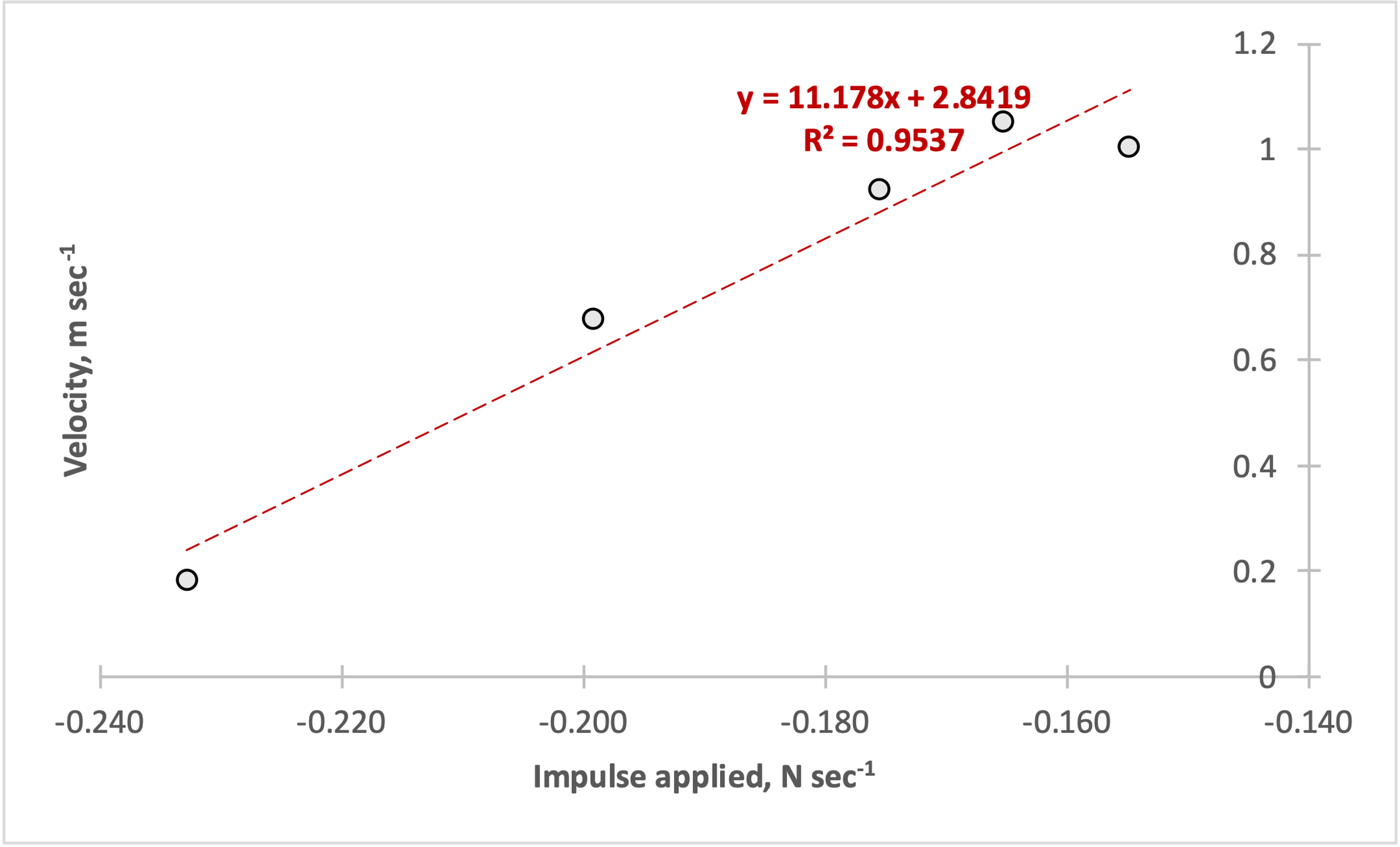Introduction
The present work used the fact that two trolleys collided in order to measure the momentum of their impact. A moving trolley moving in the same plane transmitted momentum to a stationary trolley. The result of this impact is also the transfer of velocity: the system of two trolleys acquires a common speed and moves in the direction of the original movement. The aim of the laboratory work is to study the dependence of the final speed of the cart on the momentum: the findings show that this dependence is a linear upward trend.
Data
In this laboratory work, one moving smart cart (m = 0.252 kg) made a collision with a stationary cart (m = 0.253 kg). The result of this collision was an impulse transfer, and force transducers were attached to the trolleys which automatically measured the changing force during all phases of the collision between the two trolleys. Table 1 below provides information about the measured time difference and average force values that were achieved during the trolley collision. In addition, the Table contains information about the calculated impulse and velocity values. The velocity was determined instrumentally by an automatic calculation: the results are shown in the last column.
Table 1. Data collected instrumentally during measurements and calculation results
Results
General equation for determining the momentum of motion under varying forces:

Or for one-dimensional movement, which is exactly the same as the current dynamics of a smart trolley in a straight line:
This equation can be used to calculate the momentum during each of the collision tests. The third column of Table 1 contains the calculated momentum values for each of the rows based on the data. The relationship shown in Figure 1 was plotted for the calculated values of momentum and velocity of the stationary cart to which momentum was transferred. As can be seen from this relationship, velocity as a function of impulse applied has an upward trend, that is, an increase in impulse naturally leads to an increase in final velocity as well. It is noteworthy that the linear regression model appears to be quite accurate, as the coefficient of determination is quite high (Turney, 2022). Moreover, the slope coefficient makes physical sense, that is, an increase in the collision momentum for every one unit leads to an increase in velocity by 11.178 m sec-1. The Y-intercept most likely does not make any sense since it corresponds to a non-zero velocity in the case of zero momentum when the cart was stationary.

Conclusion
In the present work, the final aim was to study the dependence of the velocity of an initially stationary cart on the momentum transferred during the collision with a moving cart. Both momentum and velocity were determined indirectly in this paper; a velocity vs. momentum plot was constructed for them. As shown by the linear regression results, this relationship was a linear upward trend, with the coefficient of determination showing a high reliability for this model. The physical meaning of the slope determined the rate of change in velocity with a change in momentum.
Reference
Turney, S. (2022). Coefficient of determination (r²) | calculation & interpretation. Scribbr. Web.